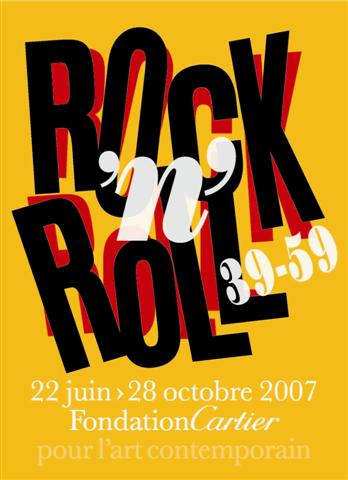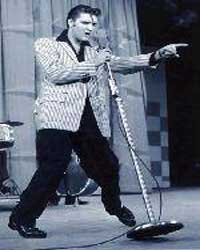Aidan Curran posted on August 06, 2007 06:59
'Rock n'Roll 39-59' is a fascinating exhibition at the Fondation Cartier in Paris. The show traces the roots of rock n'roll and presents this new music as a revolutionary moment in modern culture. Best of all, it brings to life a sound and attitude long taken for granted by today's music fans.
 For sure, the exhibition is laden with 1950s memorabilia - guitars owned by the stars, vintage Wurlitzers, even a 1953 Cadillac that symbolises the postwar consumerist explosion which gave '50s teenagers the loose change to spend on records.
For sure, the exhibition is laden with 1950s memorabilia - guitars owned by the stars, vintage Wurlitzers, even a 1953 Cadillac that symbolises the postwar consumerist explosion which gave '50s teenagers the loose change to spend on records.
But it's much more than an exercise in 'Happy Days' nostalgia. Listening posts and displays trace the heritage of rock n'roll. Blues, gospel, jazz and country are presented in family trees and interactive maps where you can listen to the music of a certain city or region. Acts as diverse as Rosetta Tharpe, Bob Wills and Duke Ellington are given their dues for influencing (in their own ways) the new sounds to come. And there are hidden treasures to discover: obscure or forgotten acts like Wanda Jackson and Professor Longhair who deserve to be listened to again.
The centrepiece of the exhibition is a 50-minute documentary on the early days of rock n'roll as we know it. For the honour of 'first rock n'roll record' the film suggests Fats Domino's 1949 song 'The Fat Man', with 1954's 'Rock Around The Clock' (sounding amazingly fresh) by Pennsylvania country-rocker Bill Haley and his Comets as being the genre's first commercially-successful single.
But the first cut of rock n'roll modern-style was 'That's All Right' by "a nineteen year old truck driver" who would change the world. Given our knowledge of the Fat Las Vegas caricature he would become, it's both poignant and thrilling to see Elvis Presley as young, fresh and energetic - the definition of rock n'roll. Everything after him feels like an imitation.
 The documentary shows how the record companies mass-market this new sound by (take note, Coldplay and Snow Patrol fans) extracting the sex and danger - sterilised crooners like Pat Boone and Paul Anka loosen their ties and sell homogenised rock n'roll-lite to a middle America still unwilling to buy records by black artists. And the film ends bleakly with the two events that mark the end of true rock n'roll - Elvis entering the army in 1958 (thus conforming to The Man) and the 1959 plane crash that killed Buddy Holly, Richie Valens and The Big Bopper.
The documentary shows how the record companies mass-market this new sound by (take note, Coldplay and Snow Patrol fans) extracting the sex and danger - sterilised crooners like Pat Boone and Paul Anka loosen their ties and sell homogenised rock n'roll-lite to a middle America still unwilling to buy records by black artists. And the film ends bleakly with the two events that mark the end of true rock n'roll - Elvis entering the army in 1958 (thus conforming to The Man) and the 1959 plane crash that killed Buddy Holly, Richie Valens and The Big Bopper.
All visitors to the show receive a free four-track CD featuring four defining tracks from 1956, rock n'roll's greatest year - Elvis singing 'Hound Dog', Chuck Berry performing 'Roll Over Beethoven', Little Richard's 'Good Golly Miss Molly' and Carl Perkins version of his own 'Blue Suede Shoes'. These songs are part of rock's subconsciousness and listening to them today you're struck by their continuing vitality and promise of excitement. You know these songs - but have you ever listened to them? Bringing this fantastic music back to indie-kids like me is a measure of the exhibition's success.
The exhibition continues until 28 October: if you're in Paris you must visit it. Mona Lisa can wait - after all, she belongs to Nat King Cole and the crooners.
Are your old people out of the room? Good. Here's the corrupting influence of Elvis Presley, singing 'That's All Right' - gyrations included. Is this the greatest rock star ever or WHAT?:
More ...
[Read More...]